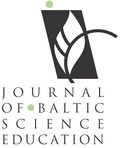PORTFOLIOS IN ENVIRONMENTAL EDUCATION: THE TEPEE PROJECT
| Title | PORTFOLIOS IN ENVIRONMENTAL EDUCATION: THE TEPEE PROJECT |
| Publication Type | Journal Article |
| Year of Publication | 2012 |
| Authors | Chetcuti, D, Pace, P |
| Journal | Journal of Baltic Science Education |
| Volume | 11 |
| Issue | 1 |
| Start Page | 16-28 |
| Date Published | March/2012 |
| Type of Article | Original article |
| ISSN | 1648-3898 |
| Other Numbers | ICID: 988258 |
| Keywords | education for sustainable development, environmental education, learning and assessment in environmental education, portfolio assessment |
| Abstract | Teaching and assessment in Environmental Education (EE) is rather complex because it needs to address the learners’ ability to ask questions, solve problems, and develop positive values. Portfolio assessment is a holistic way to evaluate the growth and development of skills and values in EE by providing a cumulative record of work carried out by students in a variety of contexts and allowing students to reflect on the process of how their views and values change. The main aim of this paper was to discuss the process of the development and implementation of a European Portfolio for Environmental Education by TEPEE (Towards a European Portfolio for Environmental Education) Network, within seven European countries. The paper narrates the development and implementation of EPEE through the eyes of the TEPEE scientific committee coming from the seven partner countries. Their views about the advantages and disadvantages of the use of portfolios within the context of EE were collected by means of questionnaires using open-ended questions. The results of the study suggest that the main advantage of using portfolio assessment is that it provides a holistic picture of the learning and growth of students in different contexts and situations. The major asset was the enthusiasm and motivation it raised among the teachers using it. The major difficulty was trying to change the assessment culture of teachers who were used to more traditional forms of assessment. |
| URL | http://oaji.net/articles/2014/987-1419166612.pdf |
| DOI | 10.33225/jbse/12.11.16 |
| Refereed Designation | Refereed |
| Full Text |
